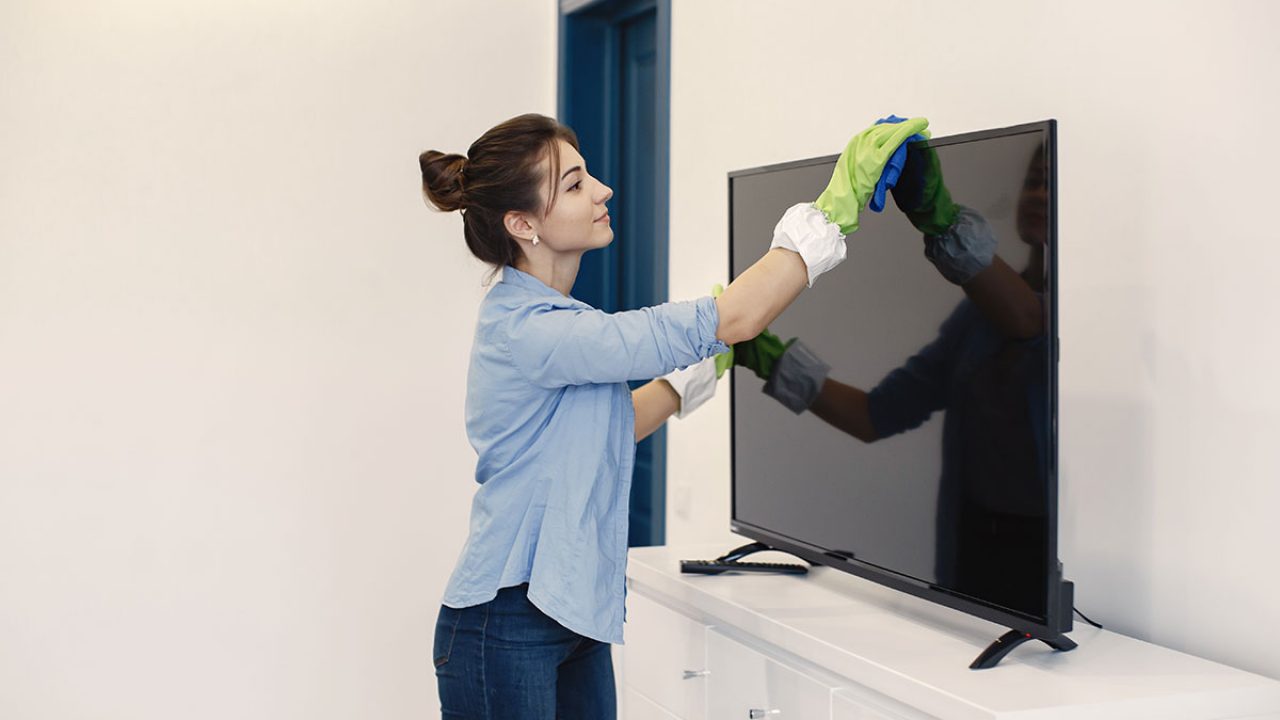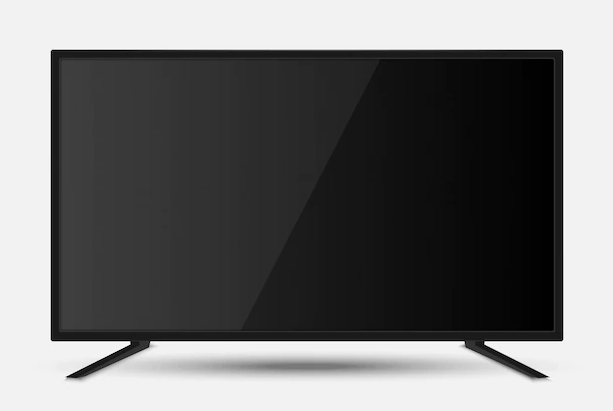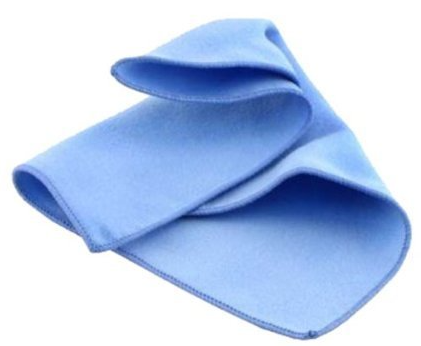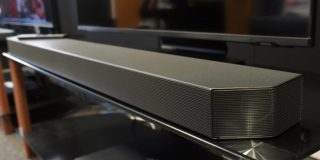How to Properly Clean Your TV Screen

Over time, a TV screen will accumulate dust, streaks, and other stains that distort the image. As a result, your viewing experience will be compromised. But cleaning a dirty TV screen can be risky. After all, using the wrong methods can lead to permanent damage.
If you’re unsure how to clean your TV screen properly, you’ve come to the right place. You can find the best advice for doing so below. Read on for all the details.
Never Use Harsh Chemicals or Other Objects
You should never use harsh chemicals like Windex or thinners to clean modern TV screens. These are made of plastic, which can react to strong chemicals and potentially break down. The result of using these substances include permanent damage to the surface.
Cleaners like Windex are designed to work with glass, so the manufacturers added harsher substances into the mix. Glass doesn’t usually react to chemicals, so it’s safe to use Windex with your windows. However, products like Windex Electronics may be used with your TV screen.
These sprays are mostly water, but you should check to ensure don’t contain alcohol or ammonia. These two substances can damage TV screens, so avoid any products with unclear content descriptions.
Distilled water is the best cleaner for plastic screens, but using other objects instead of microfiber cloths can also result in damage. These include the following.
- Tissue paper
- Paper towels
- Old rags
These fibers aren’t designed to clean screens and are likely to leave scratches.
With this out of the way, you can now learn more about cleaning your TV screen.

Cleaning a Modern TV Screen
The category of flat-screen TVs or modern TVs include the following illumination types:
- LCD
- LED
- OLED
- Plasma TVs
These TVs don’t have glass screens, so you need to use a microfiber cloth to wipe them. Some TVs ship with one in the package, but it’s possible you may have discarded or lost it. No need to worry, as you can buy large microfiber cloths to clean your TVs.
While each TV is different, you can use some basic cleaning steps to ensure it looks good as new.
- Turn your TV off and unplug it from the socket.

- Grab a soft microfiber cloth and wipe the screen using gentle, circular motions.

- If there are any tougher stains, use distilled water to moisten the cloth and repeat Step 2.
- Should Step 3 fail, add a small amount of neutral dish soap and distilled water to the cloth and try again.
- Wait for the TV screen to dry.

- Plug the TV back in, and you’re good to go.

The circular motions allow you to clean a larger area compared to wiping up and down. Take care not to use too much force, as even with a microfiber cloth, you may damage the surface and make tiny scratches. Pushing down too much can even destroy pixels on the TV, and you’ll have dead pixels that stand out glaringly.
You can also spray some flat-screen TV cleaner during Step 4. Take care not to spray the screen itself, as that won’t do any good to the surface. Instead, only apply water and soap to the cloth.
When adding water, make sure to squeeze out any excess fluid. The cloth should only be mildly damp. Too much water can seep inside the TV, which can damage the internal electronics.
Moreover, some TVs have specific cleaning instructions. It’s best to check the owner’s manual and see if yours has any particular protocols.
If you don’t want to use a microfiber cloth, an acceptable substitute is an electrostatic duster. These devices can remove dust from the screen surface just as effectively.
Cleaning a Tube TV
Tube TVs are also known as cathode-ray tube TVs or CRT TVs. These may be old, but retro gamers see them as valuable treasures from a bygone era. Games played on old consoles like the N64 and SNES look at their best with a CRT TV.
If you’re a Super Smash Bros. Melee fan, you know that even the largest Melee tournaments use CRT TVs. There are thousands of dollars on the line, yet the technology used for the screen is ancient.

For that reason alone, gamers and other enthusiasts must know how to clean a CRT TV. Compared to the modern flat screens, you’ll find the process less troublesome.
- Turn your CRT TV off and unplug it.

- Use a microfiber cloth that has been dampened.

- If there are stubborn stains, add some window cleaner to the cloth.
- Wipe using gentle circular motions.

- Any resilient dirt can be nudged off with a fingernail or piece of soft plastic.
- Wipe the screen dry.
CRT TVs use glass panes, so window cleaners can do an excellent job with dirt and grime. Unlike windows, a CRT TV can contain wood or old plastics. These can be damaged if you spray Windex directly onto the screen. That’s why applying the water and cleaner to the cloth itself is the safer option.
Never press too hard on the screen either. Glass may be more rigid, but you don’t want to take any risks.
The CRT TVs may be resilient, but using a cloth with too much water is also dangerous to the internal parts of the set, not to mention the cabinetry. Squeezing the water out will ensure you don’t damage your old TV.
A Clear Picture
There are few things more frustrating than noticing a filthy TV screen during movie night. Owners will want to do some cleaning to improve their viewing experience. However, using the wrong cloths and cleaners may permanently damage the screen. You might even void the warranty that’s covering the device itself.
If you follow these steps or those in your owner’s manual, however, you’ll minimize the possibility of damaging your TV. It will as look good as new after some cleaning.























